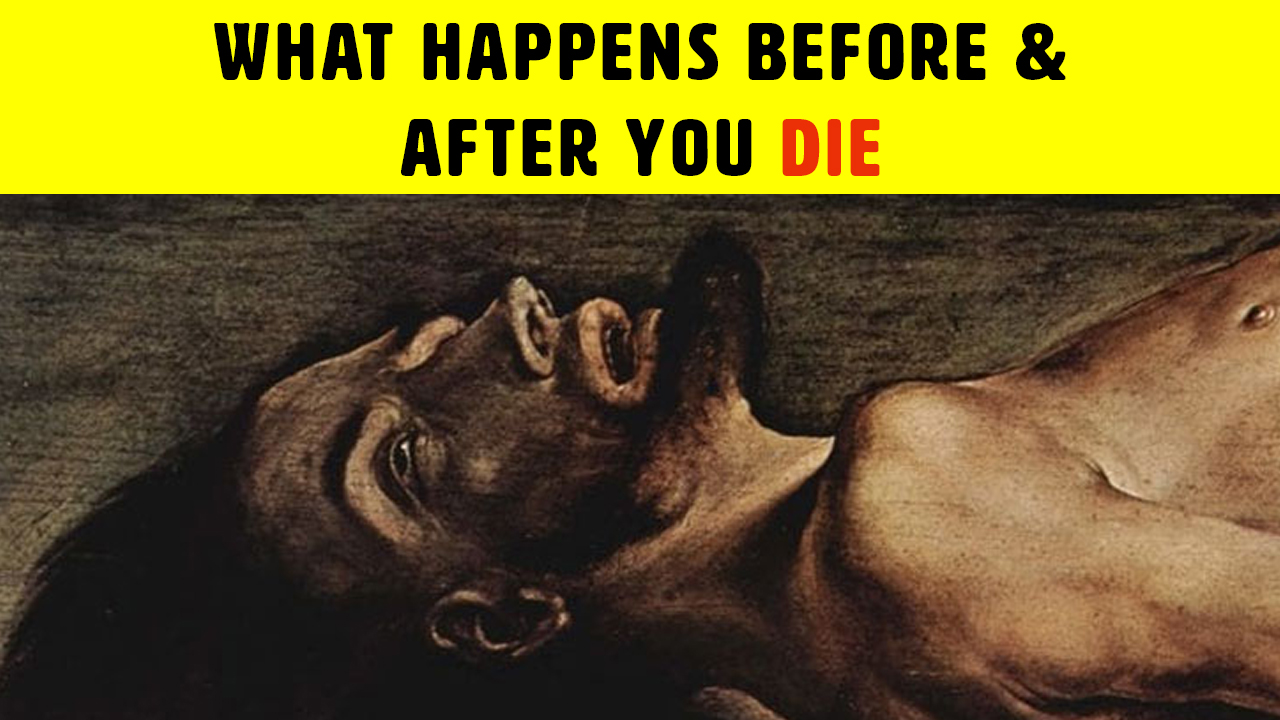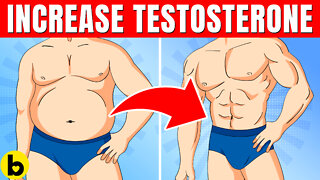Premium Only Content

9 Things That Happen Before And After You Die
The things that happen before and after you die. If there is one thing that is certain in life, it’s that we can never prepare for death. Also, few people actually know what to expect when our life clock ticks down to zero. But according to science, death, much like life, is a process.
#BeforeDeath #AfterDeath #AfterYouDie
Timestamps:
1 Loss of Appetite: 1:25
2 Slow Moving: 2:12
3 Slipping Away: 3:14
4 Changes After Death: 3:54
5 Livor Mortis: 4:19
6 Tardieu Spots: 4:56
7 Algor Mortis: 5:20
8 Tache Noire: 5:55
9 Decomposition: 6:14
Music:
https://www.youtube.com/audiolibrary/...
Summary:
1 Loss of Appetite: Dr. O’Connor explains that a person’s appetite could begin to dip for various reasons when they’re dying. The first reason is that the body could be producing excess catecholamine, which is a chemical in the bloodstream that suppresses your appetite. The other reason why a person’s appetite might diminish is that their intestines are not functioning at normal capacity. This prevents food from being processed properly, so it might sit in their stomach which can make them feel nauseous.
2 Slow Moving: Dr. O’Connor states that physical fatigue and weakness is profound when someone is nearing the end of their life. The person may talk slower, move even slower, and one of the reasons this may occur is because of the medications they are taking. According to Dr. O’Connor, many people who are in the final days of their lives are on heavy painkillers, which can slow them down. She also adds that having out-of-balance electrolytes can add to this as well. In addition to weakness and fatigue, Dr. O’Connor says that in the final hours, some people have what is called a “death rattle” when they breathe. This occurs because the person is unable to cough up or swallow discharges. It’s painless for the person, but can be troubling for loved ones.
3 Slipping Away: According to Dr. O’Connor, when a person dies, physicians will check for two types of death; cardiac death and brain death. If a person is a ‘vegetable’, that means that they have no brain activity and life support is what is keeping the organs functioning. Dr. O’Connor states that at that point, life support is turned off because they have passed on. But she also mentions that it can be trickier when it comes to cardiac death. In many cases, a person’s heart stops but is then restarted and functions normally.
4 Changes After Death: According to Medscape, there are stages that the body goes through immediately after death. The first stage is Rigor Mortis. This is when the body begins to stiffen. In most cases, this begins to occur within a couple of hours after the person has died. Rigor mortis begins to pass within 24 hours after death.
5 Livor Mortis: Livor mortis is also known as hypostasis. It is the discoloration of a person's skin after blood pools in the dependent parts of a person's body after death. After rigor mortis occurs, livor Mortis begins. Livor Mortis is when purple-red coloration appears in certain areas of the body. This occurs because the blood begins to settle in the body under the force of gravity. The reason the blood begins to pool is because the heart no longer circulate the blood.
6 Tardieu Spots: When the body dies, certain vessel areas begin to rupture. Medscape states that Tardieu spots are hemorrhages that develop in areas of dependency. The increased pressure and gravity is what causes this to occur. Tardieu spots are characterized by purple or black spots on the skin which can develop after death.
7 Algor Mortis: Algor mortis is considered the second stage of death. This occurs when the body's temperature begins to change. Naturally, our bodies are extremely warm. It’s the only way for blood to properly flow through the body. But once the body dies, the temperature begins to cool off. With no blood to flow through the body, it’s natural that it begins to cool down. This can happen gradually, but if the temperature is cooler than the body temperature at the time of death, it can happen immediately according to Medscape.
8 Tache Noire: When the eyes are not completely shut when someone dies, tache noire occurs. Medscape explains that this happens because post-mortem drying begins to occur. It’s a dark, red-brown stripe that appears across the eyes.
9 Decomposition: According to Medscape, decomposition is a process of endogenous autolysis and putrefaction. Autolysis is the destruction of cell tissues by their own enzymes. Putrefaction is rotting or decaying of a body.
-
 11:06
11:06
Bestie
2 years ago12 Ways To Increase Your Testosterone Levels Naturally
8471 -
 0:30
0:30
timefortim1
4 years ago $0.01 earnedThings that happen at night
33 -
 3:23
3:23
eman1999
4 years ago5 Remarkable Things That Happen When You Do Yoga Daily
56 -
 LIVE
LIVE
MyronGainesX
1 day ago $32.20 earnedObama Commits Treason? Syrian War, WNBA Complains, Candace v Nick Pt. 2
12,031 watching -
 LIVE
LIVE
PandaSub2000
1 day agoLIVE 10:30pm ET | GAME BOY NIGHT 6!
398 watching -
 3:12:54
3:12:54
MattMorseTV
7 hours ago $11.94 earned🔴Reacting to the DEBATE.🔴20 BASED vs. 1 WOKE.🔴
61K25 -
 43:10
43:10
The Mel K Show
14 hours agoMel K & Dr. Karlyn Borysenko | It's the Unions!?! Collectively Organizing the Fall of This Nation | 7-20-25
66.7K71 -
 3:00:28
3:00:28
IsaiahLCarter
1 day ago $3.04 earnedWedding Bells and Gnostic Spells || APOSTATE RADIO 024 (with Keri Smith)
36K3 -
 LIVE
LIVE
Spartan
11 hours agoSpartan - Pro Halo Player for OMiT | Scrims vs C9 then ranked
79 watching -
 2:16:19
2:16:19
vivafrei
14 hours agoEp. 273: Russia Hoax CONFIRMED! Will ARRESTS Follow? Trump SUES WSJ! Epstein Docs Release? & MORE!
121K138